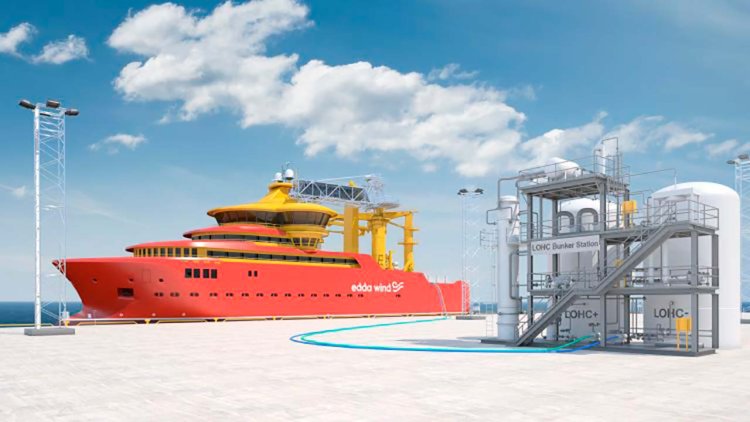Ship-aH2oy project gets EU funding
EU grants the Ship-aH2oy project EUR 15 million to equip an offshore wind vessel with a sustainable and scalable solution for power and heat generation.

With 17 partners from 7 European countries, the project aims to introduce high-temperature solid oxide fuel cells (SOFC) and liquid organic hydrogen carrier (LOHC) technology for marine use.
In combination with efficient heat integration, this will result in a scalable, safe, and sustainable power and heat generation system on board ships.
To demonstrate the technology, a 1 MW hydrogen power system, consisting of a fuel cell module and a hydrogen release unit, is intended to be installed onboard a new service operation vessel (C/SOV).
Edda Wind is a market leading C/SOV operator. Their new fleet of C/SOVs for offshore wind operations are all designed with spare room for the future installation of hydrogen power systems up to 3 MW.
“We are thrilled to be a part of Ship-aH2oy and to have the opportunity to demonstrate this cutting-edge technology onboard one of our vessels. With the support from EU and our excellent consortium partners, we are ready to take the next step toward zero-emission maritime operations for offshore wind farms,” says Kenneth Walland, CEO of Edda Wind.
At a later stage, the project will also include a replication study for integrating the power system on board a passenger ship operating on coastal waters. The implementation and demonstration will prove that the concept developed during the project is scalable beyond the 3 MW level.
Liquid organic hydrogen carrier (LOHC) adds a new way of handling hydrogen onboard ships in contrast to the established technologies. Instead of using gaseous or liquid hydrogen, hydrogen is chemically bound to a carrier.
The carrier chosen in this project is an industrially available thermal oil, benzyl toluene, which can be used to store and transport large amounts of hydrogen within the existing fossil fuel infrastructure. This LOHC solution also significantly increases the safety onboard as the carrier oil is non-explosive.
A hydrogen release unit onboard the ship releases the hydrogen from the LOHC into the fuel cell. The waste heat from the SOFC will be recovered for the hydrogen release unit as well as the ship’s heating needs. In this way, a high system efficiency can be achieved. In combination with the safety and handling advantages of LOHC, this makes it a very promising emission-free fuel.
“The use of liquid organic hydrogen carrier technology in this project is a potential game-changer for the maritime industry’s accelerated transition to clean energy. The LOHC solution applied enables a superior safe and efficient way to store and transport hydrogen, proven in stationary systems. We are thrilled to bring this innovative tech on the water and start testing it as main power for the vessel, demonstrating its capabilities in this groundbreaking project,” comments Øystein Skår, General Manager at Hydrogenious LOHC Maritime.

























































































































































